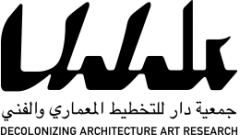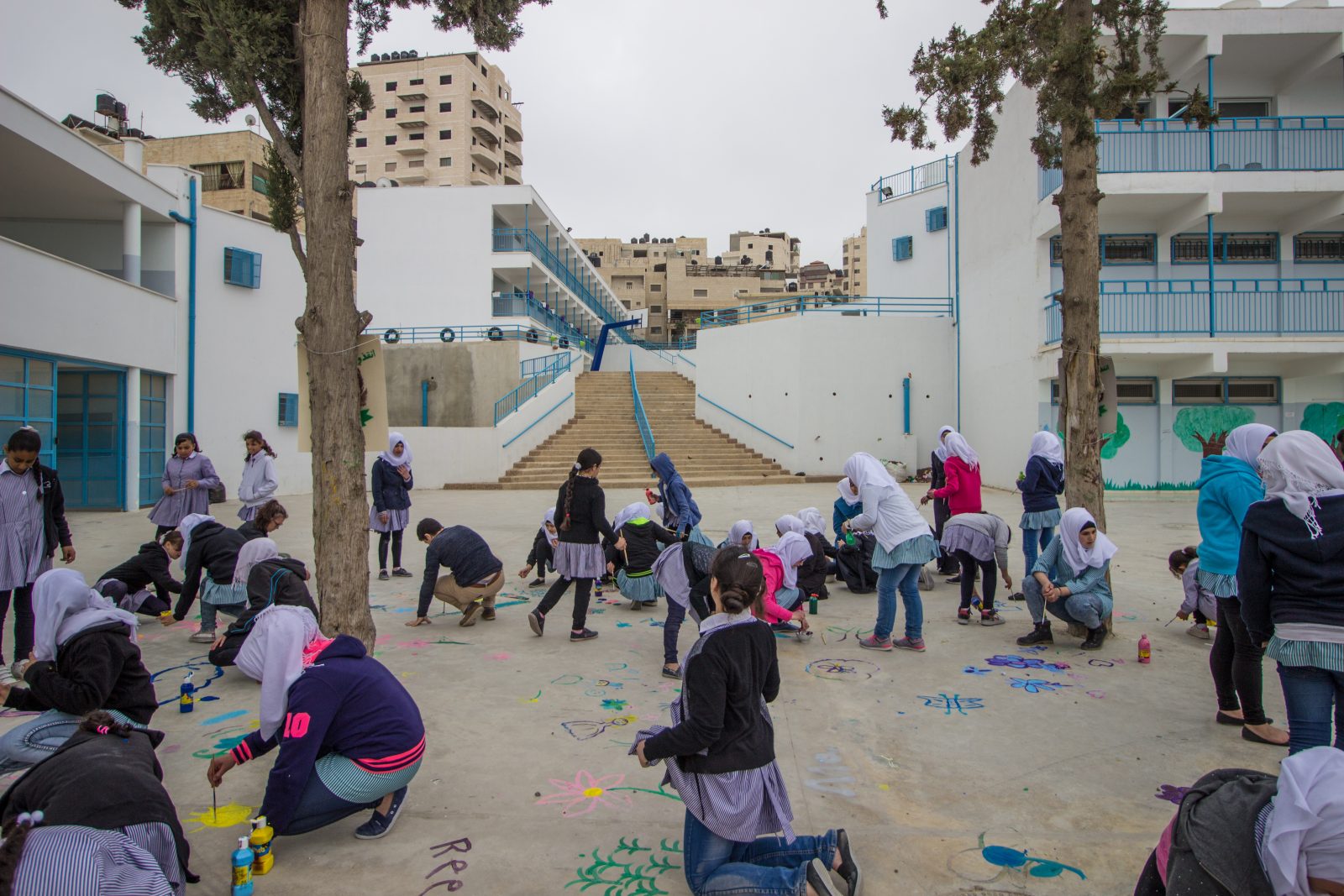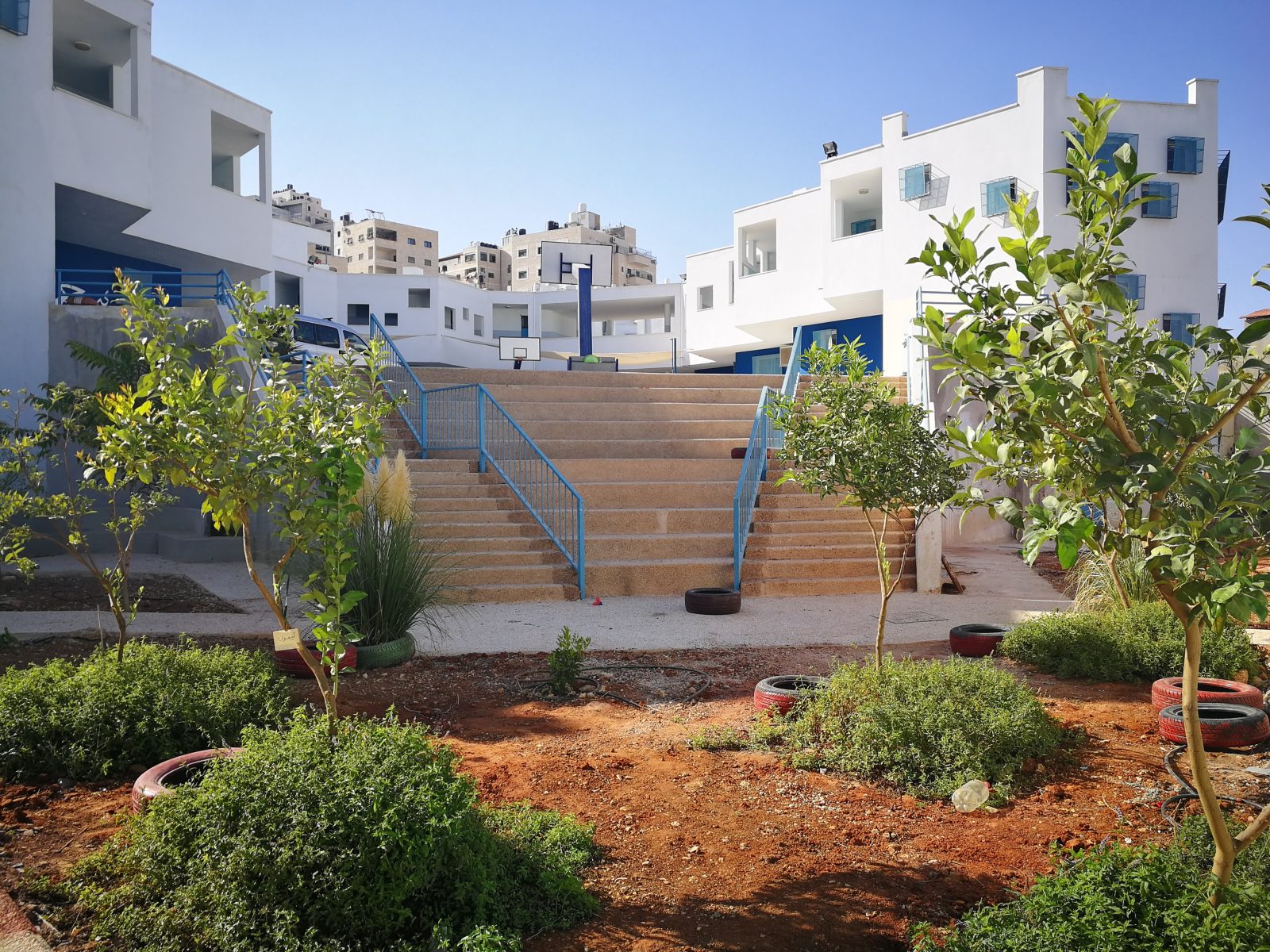The tree school took a different form in the spring of 2015, when we had the rare occasion to design a school in a refugee camp in Jerusalem based on the tree school principles. Shu’fat camp has been enclosed by walls and fences built by the Israeli government since 2002, trapped in a legal void neither inside nor outside Jerusalem’s borders. Is intervention at all possible in such a distorted and unstable political environment?
Recognizing that the camp is a spatial expression of a particular relation to another place – the place of origin – the school, instead of dismissing this relation, inhabits this tension and contradiction by mirroring the indoor classroom in an outdoor green classroom.
The outdoor classroom recalls a particular type of common green open space that existed in Palestine called Bayyaraat (from the Arabic for “wells”), resembling agricultural land constituted by plantations of citrus trees, gardens and a small number of buildings. The outdoor spaces of the school are transformed and reactivated into a space where students can cultivate different trees and reshape their learning environment.
Read here “School in Exile. Education and Architectural form”
and


